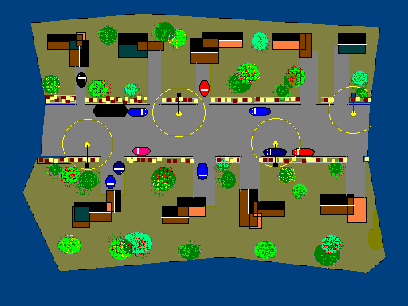|
USA Home Price per Square Foot: Color Red versus Color Blue
Stephen Chung Managing Director
Zeppelin Real Estate Analysis Limited
September 2006
Donˇ¦t get me wrong, this piece is not about conservatives versus liberals, or republicans versus democrats for that matter*, in the USA. It is about a webpage from www.zillow.com, one service of which is apparently to offer rough estimates on some 67,000,000 homes online (and for free) in the USA. Interested readers can log onto their website for a trial or even to have fun. Still, what your humble author wishes to share with you readers is not the above service, but the following webpage, as mentioned, which shows the home price per square foot ˇ§heat mapsˇ¨ of some major cities in the USA: http://www.zillow.com/heatmaps/CityHeatMaps.htm These heat maps are easier to review and comprehend, and districts and neighborhoods are differentiated according to their average home price per square foot ($/ft2) and assigned different color codes based on the averages. The highest / hottest almost pure red color denotes a $/ft2 above $1,000 while the lowest / coolest pale blue-purple color denotes a $/ft2 of less than $50. Naturally, most places fall in between and a quick glance seems to indicate most $/ft2 are more than $150 (blue color) yet not exceeding $650 (yellowish-orange color). As the geographical scales in these heat maps appear to be similar (not the same though with some maps taken from a high altitude than others), they could provide a quick reference on which cities have pricier clusters of homes and which comparatively do not, and thus which cities may have more wealthy people and which do not. Using this simple technique, your humble author has categorized the observed cities as follows: A) RED = Silicon Valley and it stands out shining brightest i.e. in terms of having mostly bright color tones starting from yellow ($400/ft2) via orange ($600/ft2) to red ($1,000 or more/ft2). There are simply few green spots (lower than $400/ft2) and no blue ones ($250/ft2 or less) of which to speak.
B) ORANGE = San Francisco, Los Angeles, San Diego, Miami, and New York City. They show significant patches of red-orange neighborhoods yet not to the extent of Silicon Valley and there are more noticeable green-blue zones.
C) YELLOW / GREEN = Boston and Seattle. They may harbor significant red-orange districts yet the blue color zones exist in abundant patches too.
D) GREEN / BLUE = Washington DC, Phoenix, and Chicago. Not that they do not have pricey neighborhoods yet the green-blue zones appear very significant.
E) BLUE / PALE = Cleveland, Houston, Dallas, and Portland. Compared to other cities, these cities offer lower priced homes and there are little or no noticeable red-orange patches. Please NOTE these when viewing the heat maps: a) these COLOR CODES do NOT represent market activities i.e. whether they are hot with many transactions and rising prices or cool with few transactions and falling prices. They just represent the $/ft2 home prices; b) while admittedly homes in the red-orange cities would on average cost more than homes in the green-blue-pale cities, this in itself does NOT mean there are NO luxury homes in the green-blue-pale cities, just that luxury homes there may be acquired at the cost of a standard home (or maybe even less) in the red-orange cities. A pure speculation on your humble authorˇ¦s part = as there seem to be quite a lot of households, especially ones in the red-orange-yellow cities and in particular the aging baby-boomers, whose homes seem to account for a significant portion of their overall wealth and asset, there (have been / are) will be some migration moves from the red-orange-yellow zones to the green-blue-pale zones, whether within a city or between cities. This trend may become more obvious in years to come as the retiring community goes from a price-appreciation mindset to a dividend-regular income reality. In short, some folks in the red-orange-yellow zones will simply have to sell and forego their homes like it or not, in order to retire comfortably in the green-blue-pale zones, thus causing downward price pressures in some red-orange-yellow zones and upward pressures (rectified in part by increased supply) in some green-blue-pale zones. *It does somehow seem that the more liberal cities tend to have more red-orange color zones based simply on visual observations.Notes: The article and/or content contained herein are for general reference only and are not meant to substitute for proper professional advice and/or due diligence. The author(s) and Zeppelin, including its staff, associates, consultants, executives and the like do not accept any responsibility or liability for losses, damages, claims and the like arising out of the use or reference to the content contained herein. |
Phone (852) 37576388 Fax (852) 37576399 E-mail contact@real-estate-tech.com
Address c/o Zeppelin, Unit 1007, 10/F, CCT Telecom Building, 11 Wo Shing Street, Shatin, NT, Hong Kong
Copyright rests with Zeppelin and/or relevant authors
